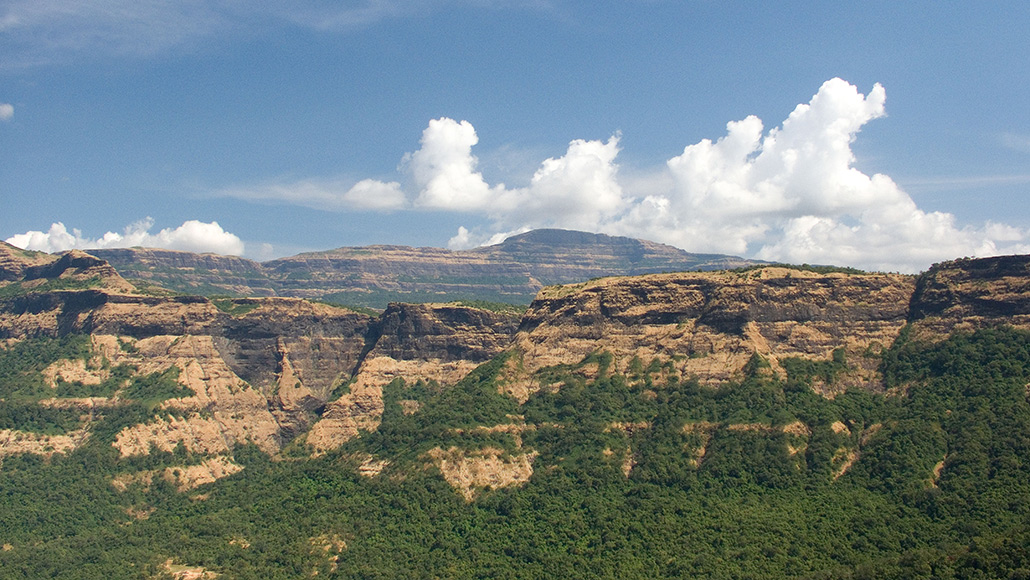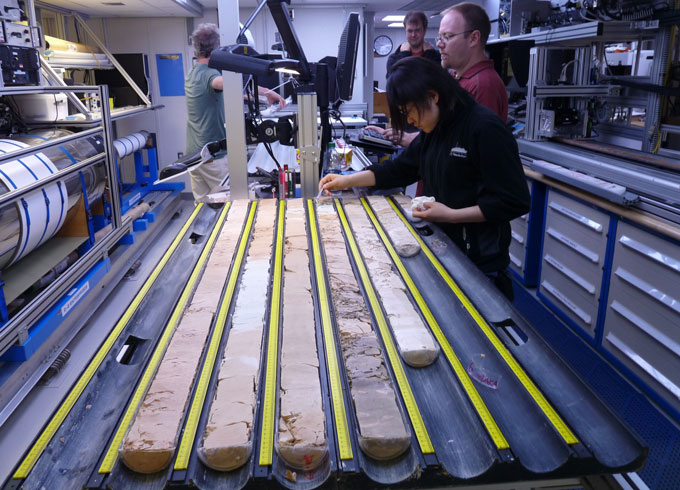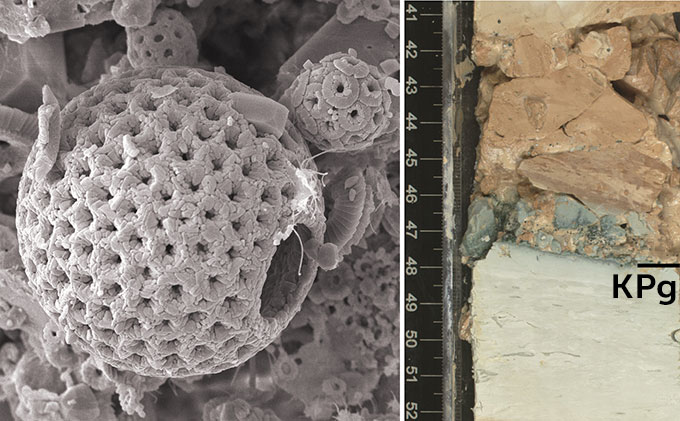
The Deccan Traps eruptions blanketed much of India’s Western Ghats mountains (shown) in lava about 66 million years ago. But the toxic gases emitted by the eruptions probably weren’t what killed the dinosaurs, new research suggests.
Dinodia Photos/Alamy Stock Photo
- More than 2 years ago
Read another version of this article at Science News Explores
Massive gas bursts emitted by volcanoes about 66 million years ago probably couldn’t have caused a mass extinction event that spelled doom for all nonbird dinosaurs, new research suggests.
Data on ancient temperatures, combined with simulations of the shifting carbon cycle in the ocean, lend support to the hypothesis that a giant asteroid impact — not toxic gases emitted by Deccan Traps eruption — was primarily responsible for the die-off, researchers report January 17 in Science.
About three-quarters of Earth’s plant and animal species were killed off during the extinction event at the end of the Cretaceous Period. Sediment deposits linked to the giant asteroid impact, which struck Chicxulub in what is now Mexico’s Yucatan peninsula, form a layer known as the “KPg” boundary. This boundary marks the transition from the Cretaceous to the Paleogene Period, and implicates the asteroid strike in the extinction event (SN: 1/25/17).
But the Deccan Traps eruptions, which spewed as much as 500,000 cubic kilometers of lava across much of what’s now western India, also occurred within a million years of the extinction. Sussing out the true killer has been challenging, because the precise timing of the Deccan Traps eruptions has been uncertain. Scientists previously have focused on dating the rocks — either zircon crystals embedded within ash layers between flows of lava (SN: 12/11/14), or outcrops of the lava itself (SN: 2/21/19). Those efforts have resulted in a range of different dates for the eruptions, some before and some after the extinction.
Core clues
Deep sea cores collected off the coast of Newfoundland in 2012 include sediments dating to just before, during and after the Cretaceous-Paleogene mass extinction event 66 million years ago. Researchers used data from those cores to help pin down the timing of when carbon dioxide and other gases were released by Deccan Traps volcanism. The data suggest that the Deccan Traps’ eruptions probably weren’t the main culprit behind the extinction event.

Furthermore, the real dino killer wouldn’t have been the lava — it would have been the volcanic gases: carbon dioxide heating the planet or sulfur dioxide acidifying the oceans. “It’s the outgassing that’s important, but it’s really hard to pin that down,” says Pincelli Hull, a paleoceanographer at Yale University.
Sudden, huge bursts of CO2 and sulfur dioxide have climate-altering power — and could have come either from the asteroid impact or from the eruptions (SN: 11/2/17). So pinning down the timing of Deccan Traps outgassing could help solve the longstanding debate.
Hull and her colleagues turned to the temperature record preserved in sediment cores from the bottom of the ocean, and created a timeline of global temperature shifts spanning several hundred thousand years before, during and after the extinction event. The researchers then examined five different scenarios for when the Deccan Traps may have erupted, and compared them with the known temperature data.
Only two of the scenarios matched the observed temperature data, Hull’s team found— and neither scenario could have caused the extinction. In one scenario, the bulk of the eruptions occurred several hundred thousand years before the KPg, causing a blip of intense warming that was over long before the actual die-off. In the second scenario, half of the eruptions occurred before the KPg, and half after. But the temperature data suggest that any climate-altering impact immediately after the KPg would largely have been muted by shifts in the ocean carbon cycle.
Those shifts are related to calcareous plankton, tiny, floating, carbonate shell-building creatures. Plankton arose during the Mesozoic Era, but became especially abundant when the Cretaceous began about 145 million years ago. They were so ubiquitous, in fact, that their life cycle — building their shells using dissolved calcium carbonate in the seawater, then dying and sinking to the seafloor — profoundly altered the ocean’s carbon cycle during the Cretaceous. The sinking shells were responsible for as much as half of the global transfer of carbon from the surface ocean to the deep during the Cretaceous, keeping the carbon cycle humming.
Carbon cycle changes
Calcareous plankton (left), ocean-dwelling creatures that build shells out of calcium carbonate, became abundant during the Cretaceous Period between 150 million and 66 million years ago. The mass extinction at the KPg, the boundary between the Cretaceous and Paleogene periods, nearly wiped out the shell-builders (seen at right in a sediment core spanning the extinction event, as white, chalky sediment during the Cretaceous transitions to the brown sediments of the Paleogene). Without those calcifiers to draw acid-buffering calcium carbonate out of the seawater, the oceans may have absorbed large amounts of acidic carbon dioxide gas emitted by the Deccan Traps in the immediate aftermath of the extinction. That absorption could have muted a temperature effect of the volcanic emissions.

But the KPg extinction wiped out almost all plankton, so the dissolved calcium carbonate stayed where it was in the surface ocean waters. Calcium carbonate is also a powerful buffer against acidification, which occurs when the ocean absorbs excess CO2 from the atmosphere. So even if the second scenario is correct, and the volcanoes emitted more CO2 after the extinction, the oceans likely neutralized a lot of it, muting its effect on global temperatures.
In other words, Hull says, “the mass extinction so affected global ecosystems that it hid the outgassing.”
The new study “used really unique methods to try to answer that question” about what caused the mass extinction event, says Courtney Sprain, a geoscientist at the University of Florida in Gainesville. “Their conclusions [about the timing of the outgassing] make sense.”
That doesn’t necessarily mean that previous geochemical dates determined for the Deccan Traps lava flows were incorrect, Sprain notes. The same technological advances that made high-precision dating of the Deccan Traps possible were also responsible for revealing that there might have been a lag between lava flows and outgassing, she says.
Understanding why there might be a timing difference between lava and gas bursts is an active area of research in volcanology, she says. “There are still quite a few questions about how any volcanic system erupts.”






